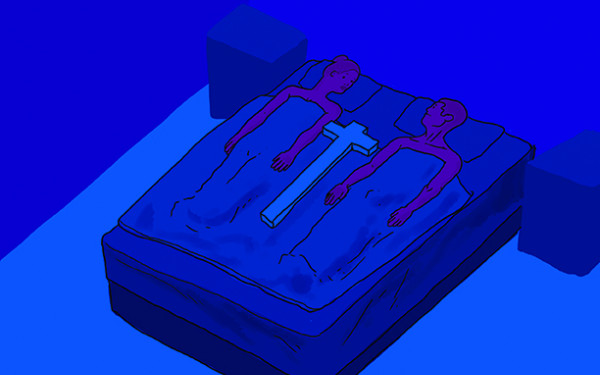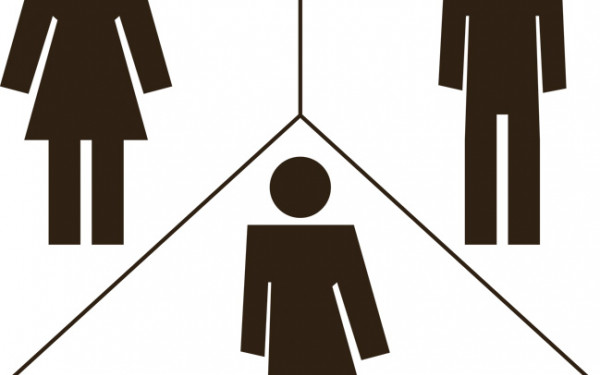‘Christianity Made Me a Slut’ (For This Play!)
Having Sex and Looking for God At the Fringe Festival
This one-woman play was one of the standouts of this year’s Fringe Festival.
Christianity Made Me a Slut was co-written by Elizabeth Blue and Maia Wilde. It was directed by Wilde, with Blue acting as a version of herself.
Blue starred alone in the 45 minute play detailing her complicated relationship to Christianity and Jesus. It featured a mixture of monologues as well as dialogues with unseen characters that Blue narrated for context.
The array of different formats never felt jarring or confusing. Blue had an expressive, funny, and subtly emotional style of narration that helped to fill in any gaps that could have been caused by a lack of characters.
Sometimes plays with just one performer can fall flat; a talented actor is needed to fully capture and maintain the audience’s attention. Blue did just that.
Her performance was high energy, she made use of her body and the small stage by constantly moving around it, fully occupying it with her physical and emotional presence.
Plus Blue kept the audience laughing the whole time.
She was able to make fun of Christianity by laughing along with it. The barbs still felt affectionate and understanding. Sometimes plays featuring this kind of subject matter can come across as aggressively mocking or mean spirited, as though the writer(s) have unresolved anger towards what they are writing about.
_900_600_90.jpg)
Christianity Made Me a Slut did not have that tone to it. The play felt evenly paced, its sequence logical despite the frequent jumps in time periods.
Whatever issues the writers may have had with Christianity in their youth came across as resolved (and funnily so!) in the play’s overall tonality.
Blue was unafraid to engage the audience seated in the front row, and seemed to deviate from her script at time to improvise based on their reactions.
There was never any confusion about the sequence of events, though the play jumped back and forth throughout several time periods in her life, from her teenage years at a prayer group to her misadventures in Bali at some kind of sexual rave scenario, leading her to a self-conscious visit to the clinic.
The play ended with a version of Blue in her early twenties living in New York City: She’s just about to lose her virginity to a boyfriend. She captured the awkwardness many people feel as they’re just about to have sex for the first time, in all its gangly, gyrating glory.
In the end, Blue started to allow more freedom into her relationship with Christ as opposed to her being fully grown and all perfect.
This was an effective narrative tool to employ at the end because it allows the audience to fill in the blanks for what could have happened to her afterwards, as it’s already been explained she resolved her relationship to Christianity.
So how did she do it? You think, leaving the play.
Art that allows the viewer to project something of their personal experience always stays in someone’s head longer as it then becomes something that can be projected onto.
While not everyone leaving Christianity Made Me a Slut came from a Christian background, The Link overheard people of a number of different religious upbringings talking about their experiences, which is perhaps the most salient point about art: Its main objective is to create commonality rather than separation.

_900_600_90.jpg)
_600_832_s.png)




_1_600_375_90_s_c1.jpg)